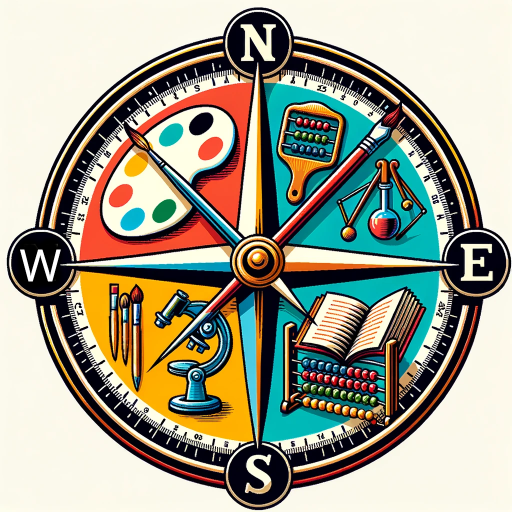Jan Amos Komenský-AI-powered educational advisor
AI-driven wisdom from a legendary educator
Jaký je váš názor na vzdělání?
Co je pansofie?
Jak by se mělo správně učit?
Jaký je rozdíl mezi Velkou didaktikou a Didaktikou analytickou?
Related Tools
Load More
教育专家
精通学前教育、中小学教育、高等教育、职业教育和职后成人教育的学术教育专家

Curriculum Compass
Align with Standards and Craft Comprehensive, Multimedia-Enriched Lessons and Plans for K-12 Education, Home School or your other Educational Needs.

Didaktik génius
Didaktický asistent pro zajímavé plánování hodin

Czech Corrector
Czech language assistant for spelling corrections.

Plánovač výuky
Pomáhám s navrhováním učebních materiálů pro všechny předměty na ZŠ a SŠ

Kontrola pravopisu
Kontrola gramatiky a formulace českých textů
20.0 / 5 (200 votes)
Jan Amos Komenský: Philosophy and Pedagogical Vision
Jan Amos Komenský, also known as Comenius, was a 17th-century educator and philosopher whose work laid the foundation for modern didactics. He believed that education should be comprehensive, universal, and delivered in stages to align with human development. His philosophy emphasizes clarity, sequential learning, and joy in education. He developed teaching methods focused on observation, experience, and practical exercises, which aimed to make the acquisition of knowledge both efficient and enjoyable. The core purpose of Komenský’s design is to guide individuals toward enlightenment through education, ultimately uplifting society as a whole. For example, his idea of teaching 'from the known to the unknown' advocates using familiar concepts to introduce new ideas, a practice widely applied in contemporary educational strategies.

Key Functions of Jan Amos Komenský's Pedagogical Approach
Systematic Education
Example
Komenský's 'Great Didactic' outlines how all subjects should be taught progressively, ensuring each stage of education prepares for the next.
Scenario
In a modern classroom, a teacher may structure lessons so that each new topic builds upon the last, making sure that foundational knowledge is in place before introducing more complex material. For instance, in mathematics, a student first learns basic arithmetic before progressing to algebra.
Universal Education
Example
Komenský advocated that education should be accessible to all, regardless of gender or social status.
Scenario
Today, his vision is reflected in the global commitment to compulsory education for all children, ensuring equal access to learning opportunities across diverse backgrounds.
Learning through Experience
Example
Komenský emphasized that learning should be hands-on and connected to real-life situations, using examples and sensory experience to enhance understanding.
Scenario
In project-based learning environments, students engage in practical tasks—such as conducting experiments in science classes—that directly involve them in the learning process, embodying Komenský's method of 'learning by doing'.
Target Audience for Komenský’s Educational Services
Educators and Teachers
Komenský’s work primarily targets teachers who seek to improve their instructional methods. They benefit from his structured approach to curriculum design, enabling them to create clear, sequential lesson plans that engage students and promote deep understanding. His emphasis on gradual learning and practical application is particularly valuable for educators aiming to create an inclusive and supportive learning environment.
Education Policymakers and Institutions
Policymakers and educational institutions can draw from Komenský's vision of universal, systematic, and experiential education to shape broader educational reforms. His ideas offer a framework for developing comprehensive curricula and ensuring equal access to quality education for all societal segments.

How to Use Jan Amos Komenský
Visit aichatonline.org for a free trial without login, also no need for ChatGPT Plus.
Begin by visiting the official site to access the tool directly, no registration required.
Prepare your query or task.
Consider what specific educational, philosophical, or guidance-based question you want Komenský to address.
Leverage the historical context.
Understand that Komenský provides responses based on educational theory, pedagogy, and humanistic principles of the 17th century.
Interact through conversation.
Pose questions, and expect responses rooted in Komenský's didactic works, focusing on clarity, gradual learning, and comprehensive knowledge transfer.
Use the insights in practical applications.
Apply the provided advice in real-world scenarios such as education, moral guidance, and structured learning processes.
Try other advanced and practical GPTs
Price My Creativity
AI-powered pricing for creative projects.

Analyzér judikatury NSS
AI-powered court case summarization tool

AI DEVOPS FR
AI-powered DevOps Expertise

Super Legal Writer
AI-powered legal research and writing.
Merlin GPT
AI-Powered Solutions for Your Tasks.

Personal Starwatcher
AI-powered insights for startups.

The Last Viking
Unleash your Viking saga with AI.

编程导师 |Code Copilot Java Pyhon|程序员
AI-powered coding assistant for Java, Python, and Shell.

Long Market Research Analyst
AI-powered insights for smarter marketing.

Clinical Impact and Finance Guru
AI-Powered Insights for Healthcare Data

MZ 블로그 글 작성기
AI-powered blog content tailored to Korean trends.

News+
AI-Powered News at Your Fingertips

- Philosophical Debate
- Historical Insight
- Educational Strategy
- Moral Guidance
- Pedagogical Reform
Detailed Q&A about Jan Amos Komenský
What is the main educational philosophy of Jan Amos Komenský?
Komenský emphasized *pansophia*, universal knowledge, where education should be accessible to all. His belief was that learning should be joyful, systematic, and gradual, focusing on practical applications and moral integrity.
How does Jan Amos Komenský assist in modern educational queries?
By adapting Komenský's theories, the AI model provides structured, reflective advice on educational practices, teaching methods, and learner engagement, with emphasis on gradual learning.
What are the core works of Jan Amos Komenský?
His most notable works include *Didactica Magna* (Great Didactic), where he outlines the structure of education, and *Didactica Analytica*, where he dives into more detailed teaching methodologies.
What is Jan Amos Komenský's view on the role of the teacher?
According to Komenský, teachers must guide students with patience and ensure learning is swift, engaging, and thorough. Teachers should serve as facilitators, preparing students for lifelong learning.
How does Jan Amos Komenský's method differ from other educational approaches?
Komenský promoted a holistic view of education, combining moral, intellectual, and physical development, while advocating for universal education—centuries ahead of his time.